Autotask is all-in-one web-based Professional Services Automation (PSA) software designed to help run your business more efficiently and profitably.
Configuring Axcient with the Autotask API allows you to speed up billing by linking your Axcient customers to their accounts in Autotask. You can also push and monitor severity-based backup notifications to Autotask as service tickets.
Important: If you are new to Autotask, please be aware that you must create and configure a variety of Autotask settings in Autotask before you add your Autotask accounts to Axcient. If you currently use Autotask, you probably have already performed most of these steps. But review the following checklists for both billing and ticketing to ensure you understand each requirement before you begin to add any accounts to Axcient.
This article includes the following how-to topics:
| API |
| BILLING |
| TICKETING |
Create an API user in Autotask
As a first step, the administering Autotask resource account must be configured as an API user.
For this step, you should create a new resource account.
To create an API user in Autotask:
1. Hover your mouse over the Autotask icon to activate the main navigation menu.
2. Point to the Admin tab and select Resources (Users).
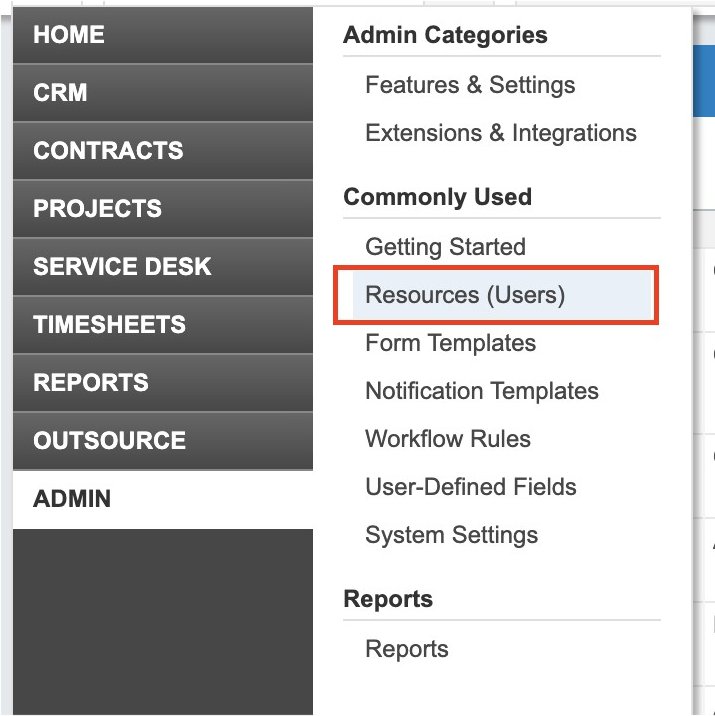
3. Go to the dropdown menu to the right of the New button and click New API User.
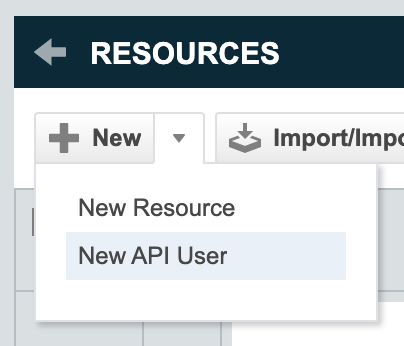
4. Fill in the mandatory fields with account information in the General section:
- In First Name, enter a first name of the resource.
- In Last Name enter a last name of the resource.
- In Email Address, enter the email address of the user.
- In the Email Type drop-down menu, select Primary.
- In Security Level, select API User (System).
Important: You must select API User (System) to use API 1.6. - In the Date Format drop-down menu, select the preferred date format for the user.
- In the Time Format drop-down menu, select the preferred time format for the user.
- In the Number Format drop-down menu, select the preferred numbering format for the user.
- In the Primary Internal Location drop-down menu, select the location of the user.
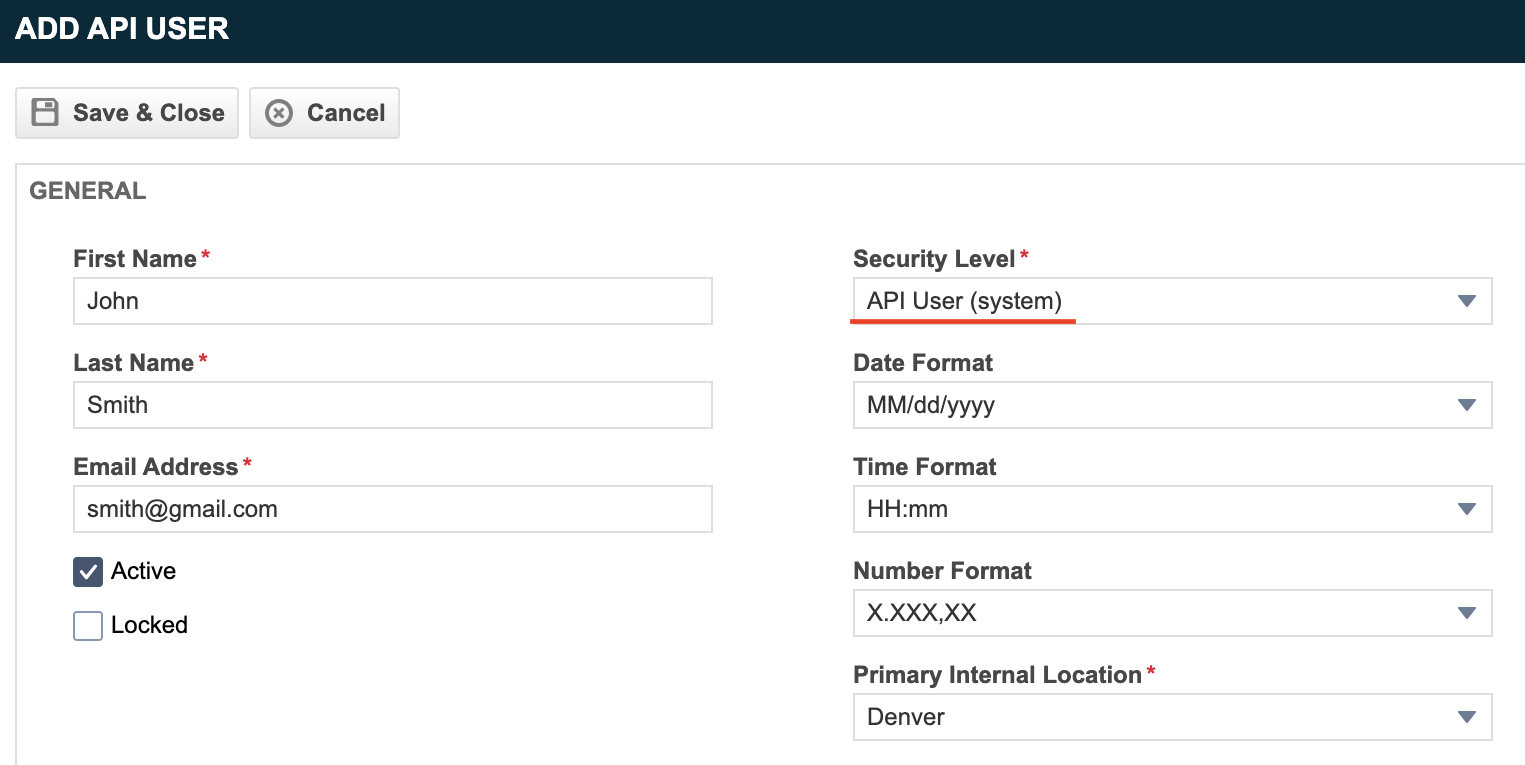
5. Fill in the Credentials section and add an API Tracking Identifier for the new API user:
- Click Generate Key to create a username.
- Click Generate Secret to create a password. Note: This password can only be viewed once when created. You must save this password in a safe place, because you will later need to add it to BFF Portal.
- For API Tracking Identifier, select Custom (Internal Integration). Tracking Identifier will be generated automatically.
- In Internal Integration Name, enter the preferred integration name.
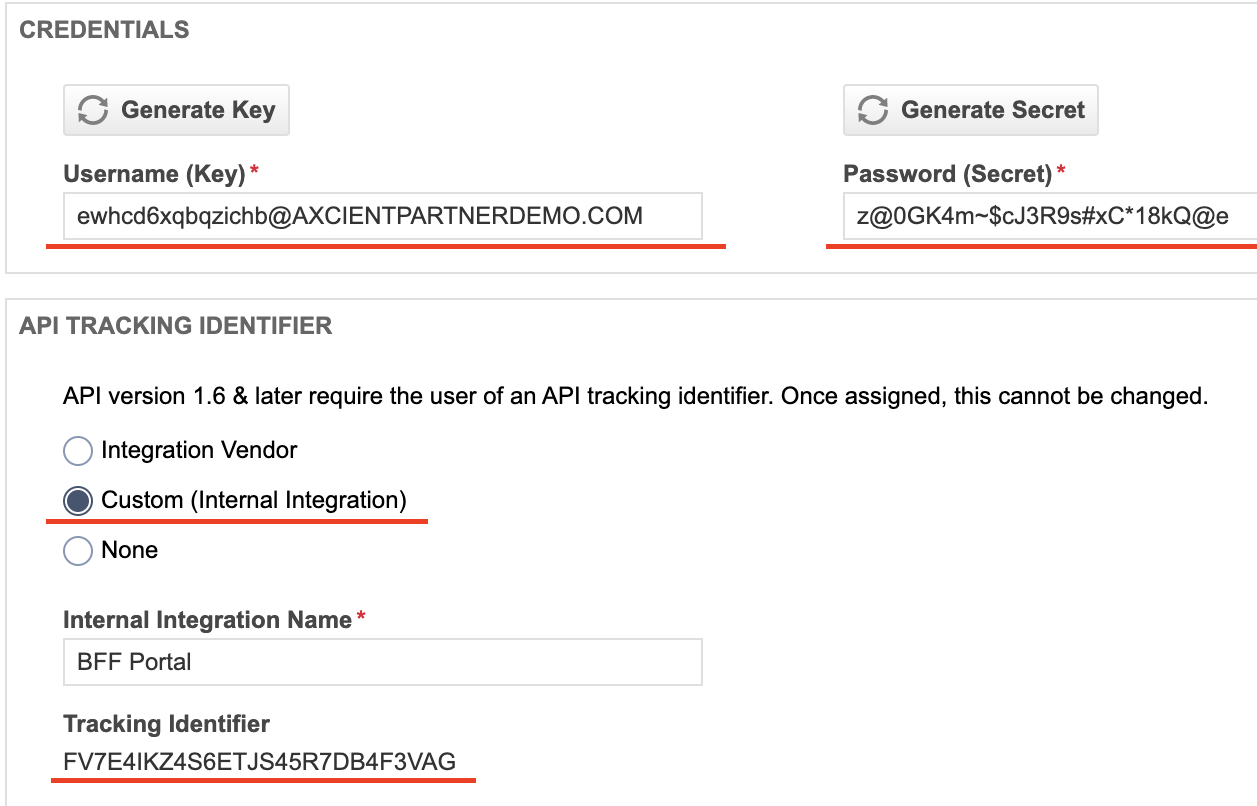
6. Click the Save & Close button when you are finished.
= = = = = = = = = = = = = = = = = = = = = = = = = = =
Set up billing in Autotask
If you plan to integrate billing with Autotask, the following tasks must be completed in Autotask:
1. Ensure that you have generated an Autotask account for each customer to be added to Axcient, including a unique Autotask Account ID#.
2. Verify that all of your Autotask customers appear in your Axcient account listing. Note: To integrate with Axcient, the Autotask Account Type must be Customer. Otherwise, Autotask account types (for example, Leads) may not behave as expected.
3. In Autotask, create a service for each Axcient product.
Note: The following settings must be used:
- The service Contract Period Type must be set to Monthly
- The Start Date must be the first day of the month
- If you use End Date, it must be set to the last day of the month sometime in the future.
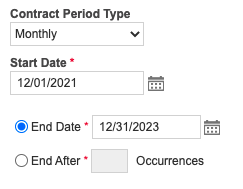
4. We recommend the service Billing Code be Recurring Service Revenue or Managed Service Contract, but you can customize this code as desired. However, please be sure to understand the Contract Requirements for each service.
5. In Autotask, define a contract for each customer using an Axcient Service. Note: Contract Type must be a Recurring Service Contract . Any attached services must be directly attached as "Services". They cannot be attached as a subset of a "Service Bundle".
Understanding Autotask Billing Settings in Axcient's Backup for Files
Every partner configures their billing settings within Autotask differently, depending on which services they sell.
However, remember that there is always a one-to-one relationship between
- Axcient services you configure in Autotask, and
- Billing settings available on your Axcient Integration page.
Service choices configured in Autotask mirror the service choices available in Axcient Billing Settings.
For example: One partner’s Axcient services might look like this within their Autotask setup:

This is how those same services look within that partner’s Billing Settings setup in Axcient:

= = = = = = = = = = = = = = = = = = = = = = = = = = =
Configure billing settings in the BFF Portal
Before you can set up any ticketing choices, you must first enter the Autotask API credentials.
1. Visit the BFF Portal.
2. Under the My Partnership tab, select Integration Setup from the menu.
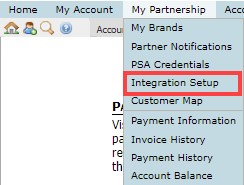
3. In the Integration Setup screen, click the Autotask checkbox.
4. In the Configure Autotask Integration section of the screen, enter the Autotask API Username and Password configured in the steps above.
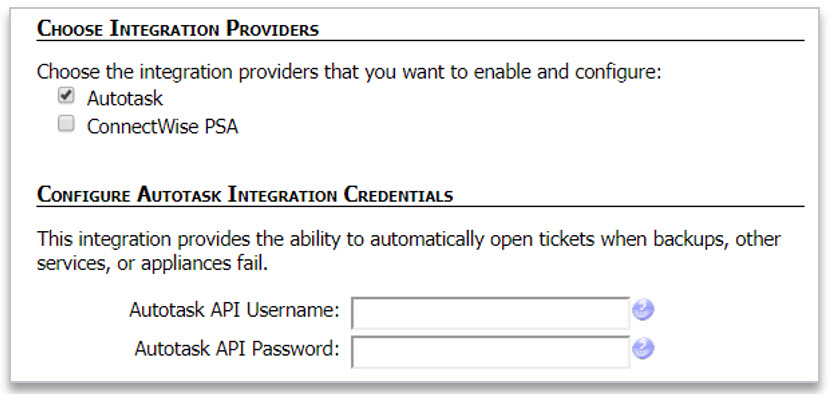
5. In the Autotask Ticket Settings section of the screen, select your preferred ticket options. (Ticketing settings are explained later in this article.)
6. In the Autotask Billing section of the screen, click the Retrieve Services List button. Next to each setting, the Axcient products assigned to this Autotask service appear.
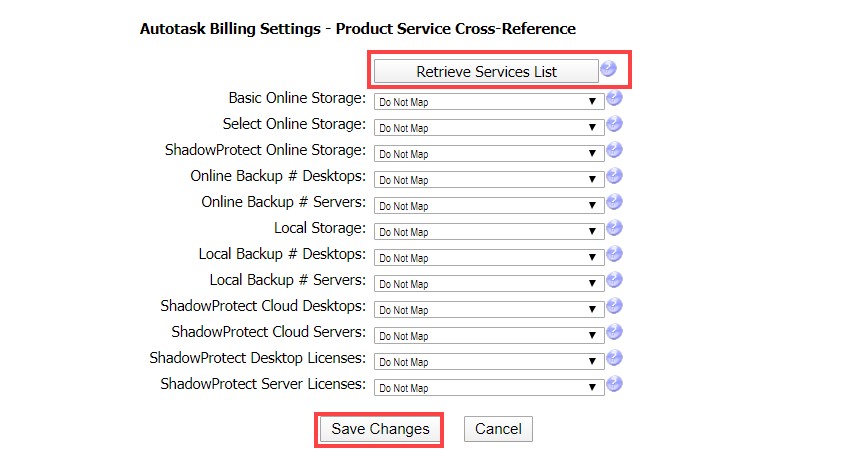
7. Use the drop-down menus to select your billing options. The table below outlines each option.

8. Click the Save Changes button when you are finished.
= = = = = = = = = = = = = = = = = = = = = = = = = = =
Map Autotask accounts in the BFF Portal
After you have completed and saved all settings on the Integration Setup screen, the next step is to map each Autotask Account ID number to the corresponding Axcient Customer ID. In the Customer Map page, you can map each Autotask customer to a Backup for Files customer. The Integration Map displays all your customers with an Axcient Customer ID. Each Axcient customer will have a blank Autotask PSA Account ID.
1. Click the My Partnership drop-down menu and select Customer Map.
Note: The Customer Map drop-down will only be visible after the Integration Setup is completed.
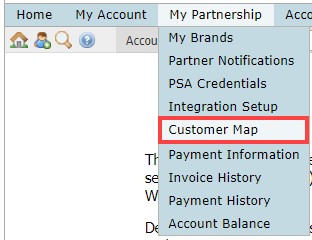
2. In the Autotask PSA Account ID field, enter each customer’s Autotask PSA Account ID#.
3. In the Autotask Customer Contract drop-down menu, select the Customer Contract.
4. When you are finished, click the Save Changes button.
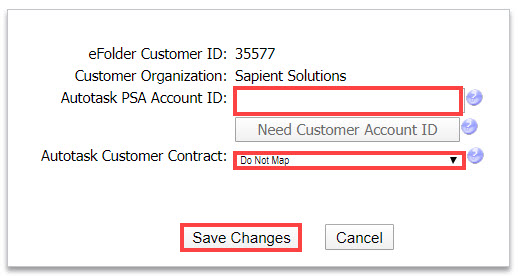
Example #1: How contracts look in the Axcient Integration Map:
In this example, two contracts for ACME Insurance can be selected: Onsite Maintenance and Select Storage Contract.
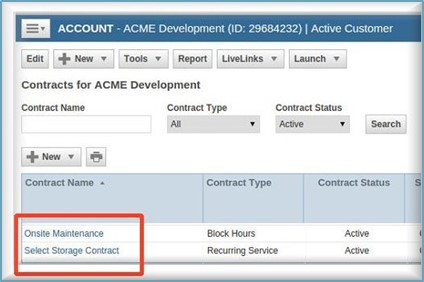
= = = = = = = = = = = = = = = = = = = = = = = = = = =
Create billing notifications in the BFF Portal
Axcient synchronizes storage amounts and license counts for billing purposes during event processing. Ideally, syncing occurs every time there is activity on an account. For Axcient to synchronize accurately with Autotask, you must set up a specific syncing notification.
1. Click the My Partnership drop-down menu and select Partner Notifications.
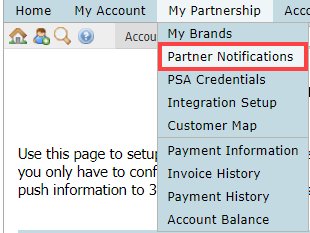
2. In the Partner Notification page, click the Create New Notification link.

3. In the Notification Action drop-down menu, select Synchronize with Autotask.
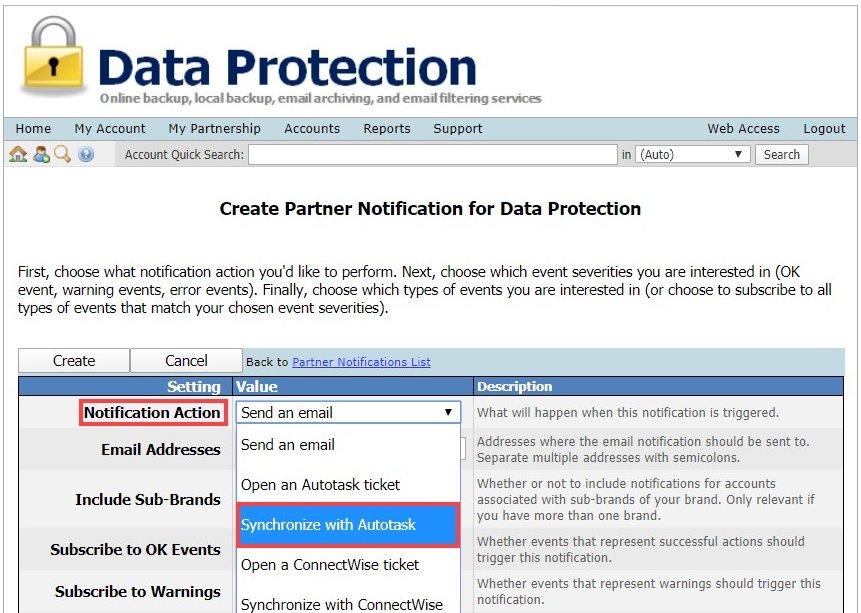
4. Leave all settings at the value of Yes and then click Create to save the synchronization request.
NOTE: The only Partner Notification that needs to be created for billing integration is the Synchronize with Autotask setting, as described in this step. Other Partner Notifications (such as those related to Autotask ticketing procedures) are not required to successfully complete billing integration.
Validate Billing
Congratulations! Your new Axcient + Autotask billing integration is now complete.
You should notice billing statistics pushed from Axcient within 12 hours of completing the integration.
To validate that all billing information is being integrated properly, please check your customer contracts within Autotask. Relevant Axcient billing information (such as the number of licenses or the amount of storage used) should now be visible.
Did you know there are “cloning” tools available in Autotask that allow you to work with an entire frequently-used contract list at one time? This is useful if many of your customers have contracts with the same services. Refer to Autotask documentation or contact Autotask Support or further help.
= = = = = = = = = = = = = = = = = = = = = = = = = = =
Set Up Tickets in Autotask
Configuring Axcient with the Autotask API allows your Axcient backup notifications to be viewed in Autotask as service tickets.
Your backup-related Axcient service tickets can then be efficiently managed alongside your other Autotask activities, allowing you to focus on one interface.
To successfully integrate your Axcient service tickets to Autotask, you must:
- Create a customer account in Autotask for each Axcient customer,
- Have access to each customer’s Autotask Account ID number, and
- Enable a notification for Autotask service tickets
Important: If you are new to Autotask, be aware that you must create and configure a variety of Autotask settings before you add your Autotask accounts to Axcient. If you currently use Autotask, you probably have already performed most of these steps. Nevertheless, review this checklist to ensure you understand each requirement before you begin to add any accounts to Axcient.
Understanding Autotask Ticketing Settings
Please note the following one-time-only Autotask activities required for each customer added to Axcient:
- Ensure you have an API user with correct permissions, as described at the beginning of this article.
- Verify that all your Autotask customers appear in your Axcient account listing. Note: To integrate with Axcient, the Autotask account type must be Customer.
- Generate an Autotask account for each customer, with a unique Account ID#.
- Autotask ticket settings to be selected or customized for use by Axcient.
- (Optional) Select a Ticket Subject Prefix to identify a ticket from Axcient.
- Autotask Queue name: Leave default setting or customize.
- Autotask Priority name: Leave default setting or customize.
- Autotask Status New name: Leave default setting or customize.
- Autotask Status Complete name: Leave default setting or customize.
= = = = = = = = = = = = = = = = = = = = = = = = = = =
Configure ticket settings in the BFF Portal
Before you can set up any ticketing choices, you must first enter the Autotask API credentials.
1. Log in to the BFF Portal.
2. Click the My Partnership tab and select Integration Setup from the menu.
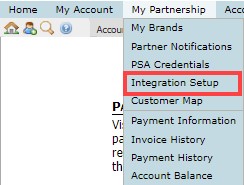
3. In the Integration Setup screen, click the Autotask checkbox.
4. In the Configure Autotask Integration Credentials section of the screen, enter the Autotask API Username, Password, and Tracking Identifier covered earlier in this article.
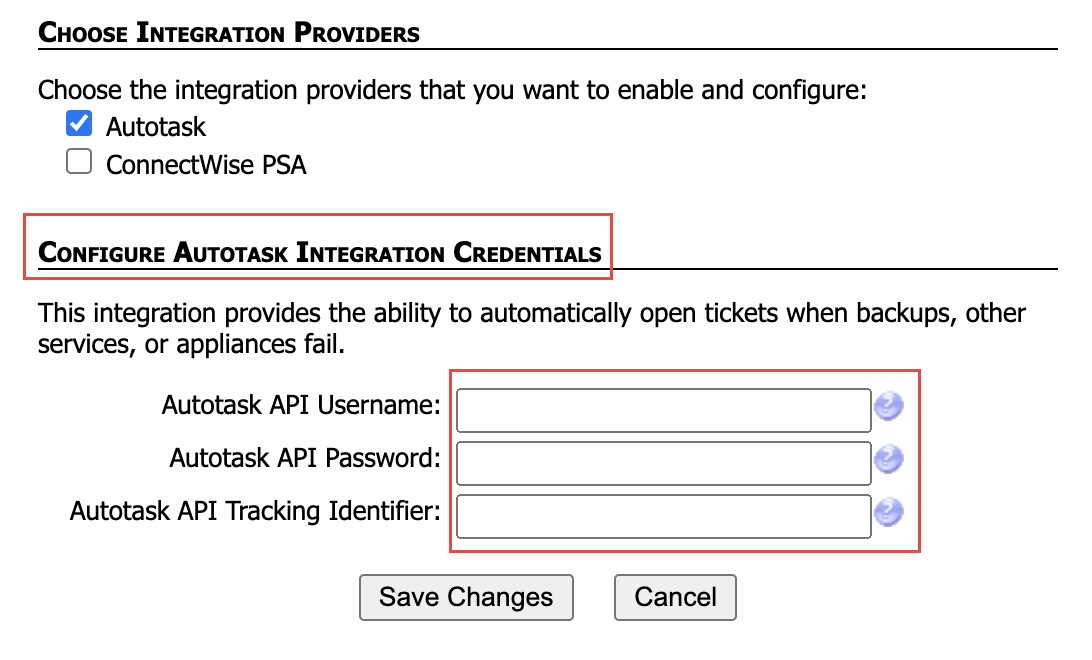
5. In the Autotask Ticket Settings section of the screen, select your preferred ticket options.

- Optionally, in the Ticket Subject Prefix field, enter a prefix to be prepended to the ticket subject. This field can also be left blank.
- In the Autotask Queue Name section, click the Retrieve Queue button to see all the available queue name choices. Choose the name you prefer from the drop-down menu. The default queue name is Managed Services Alerts.
Caution: This field must contain a selection for ticketing to occur. Setting this field to Do Not Map will disable ticketing, even if a Partner Notification has been created to enable ticketing.
- In the Autotask Priority Name field, click the Retrieve button to see all the available priority name choices. Choose the name you prefer from the drop-down menu. The default ticket priority is Medium.
- In the Autotask New Name field, select a label that will indicate a newly-created ticket.
- In the Autotask Complete Name field, select a label indicating a closed ticket.
6. Click the Save Changes button when you are finished.
= = = = = = = = = = = = = = = = = = = = = = = = = = =
Map Autotask accounts in the BFF Portal
The next step is to map each Autotask Account ID number to the corresponding Axcient Customer ID. In the Customer Map page, you can map each Autotask customer to your Backup for Files customers. The Integration Map displays all your customers with an Axcient Customer ID. Each Axcient customer will have a blank Autotask PSA Account ID.
1. Click the My Partnership drop-down menu and select Customer Map.
Note: The Customer Map drop-down will only be visible after the Integration Setup is completed.
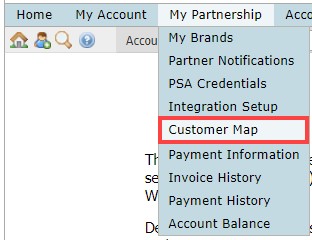
2. In the Autotask PSA Account ID field, enter each customer’s Autotask PSA Account ID#.
3. In the Autotask Customer Contract drop-down menu, select the Customer Contract.
4. When you are finished, click the Save Changes button.

= = = = = = = = = = = = = = = = = = = = = = = = = = =
Create ticket notifications in the BFF Portal
To assign the triggering conditions that send event information to Autotask, use the Partner Notifications menu option.
1. Click the My Partnership drop-down menu and select Partner Notifications.
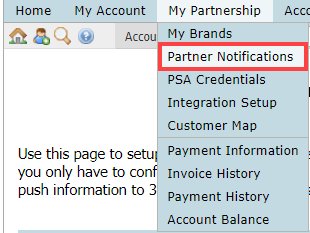
2. Click the Create a New Notification link at the bottom of the Partner Notifications page.

3. In the Notification Action field, select Open an Autotask ticket.
4. Decide which events should trigger an Autotask ticket notification.
Typically, you will only want to be notified about a ticket when there is a warning or error.
In most cases, we recommend that you leave the Subscribe to OK Events field set to its default value of No and leave the Subscribe to All Event Types field set to its default value of Yes.
You will then be notified only about warnings or errors (including backup failure, archiving failure, BDR hardware failure, and so forth).
5. When all selections are correct, click Create to accept these new settings. You can revisit this page to change these settings at any time.
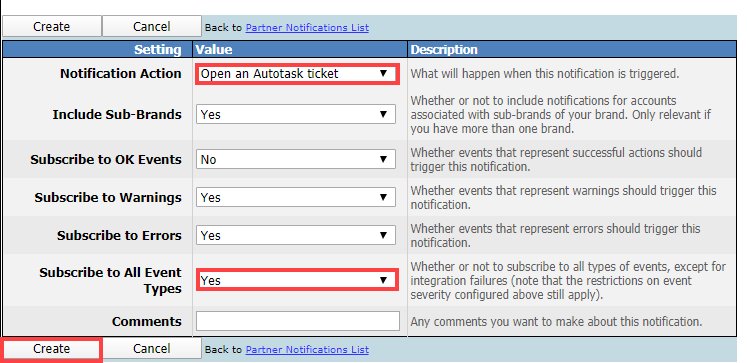
NOTE: The only Partner Notification which needs to be created for ticketing integration is the Open an Autotask ticket setting, as described in this step.
Other Partner Notifications (such as those related to Autotask billing procedures) are not required to successfully complete ticketing integration.
Validate ticketing
Congratulations! Your new Axcient + Autotask ticketing integration is complete.
As backup notifications occur, Axcient will now begin pushing information to Autotask.
To validate that all of your expected Axcient backup notifications are being created and displayed in Autotask, please review the Event Log for several of your Axcient accounts.
In Autotask, you should begin to see new tickets being created within the designated Ticket Queue, based on the triggers you specified in the Partner Notifications.
Additional Information
For specific questions about performing Autotask steps, please refer to Autotask documentation or contact Autotask Support for further help.